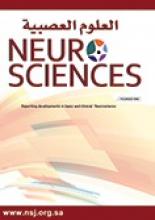Abstract
Restless leg syndrome (RLS) is an abnormal sensation disorder. Defining the syndrome is difficult. It is transmitted autosomal dominant genetically, is especially prevalent in the lower limbs, and is seen in both genders. In the differential diagnosis of RLS, nocturnal leg cramps, akathisia, peripheral neuropathy, entrapment neuropathy, and vascular disease (for example, deep vein thrombosis) should be considered. A 52-year-old woman was admitted to our clinic with signs of paresthesia, she had abnormal sensation disorder in both legs and the right arm, which she had difficulty defining. She had applied to another center with the same complaints and had been evaluated as entrapment neuropathy, carpal tunnel syndrome, and/or peripheral neuropathy. Her electromyographic examination carried out by us was normal. The history, neurological examination findings, and results of standard laboratory analyses provided a diagnosis of idiopathic RLS. After the diagnosis of RLS in the proband, we questioned other family members. Her large family had 63 members, 35 males, and 28 females. Of 63 members, 17 also had an RLS diagnosis.
- Copyright: © Neurosciences
Neurosciences is an Open Access journal and articles published are distributed under the terms of the Creative Commons Attribution-NonCommercial License (CC BY-NC). Readers may copy, distribute, and display the work for non-commercial purposes with the proper citation of the original work.






